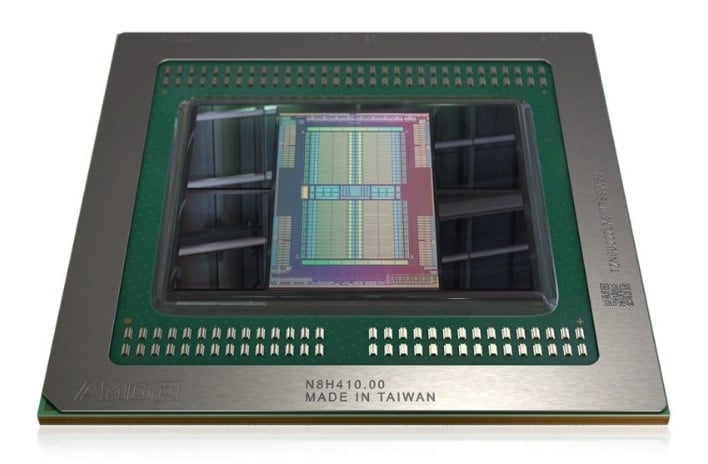
The next generation of AMD Radeon graphics cards might be quite a departure from its past products, if the rumors to date are accurate. The cards, which are likely to be part of the Radeon RX 8000 family, are expected to be based on the fifth revision of AMD’s RDNA architecture, known as “RDNA 4” (with the fourth revision being the integrated-only “RDNA 3.5”.) According to prior rumors, AMD isn’t targeting the top dog spot this time around, and instead the Red Team is only expected to offer two different chips, known as Navi 44 and Navi 48.
According to the latest rumors, the oddities don’t stop there. Regularly-reliable hardware leaker Kepler (@Kepler_L2 on Xwitter) has just posited the idea that AMD’s RDNA 4 GPUs might continue to use GDDR6 memory instead of the new GDDR7, and that they’ll be limited to a relatively-modest 18-Gbps per-pin transfer rate. That’s surprising, considering that the company’s extant RDNA 3 GPUs already use GDDR6 memory clocked at 19.5 Gbps and 20 Gbps.
There are a lot of reasons that AMD might not be going for the absolute fastest memory available on its new GPUs. Given earlier rumors that the cards aren’t targeting top-shelf performance, it makes sense that AMD would want to control costs for the GPUs. The company may be targeting an aggressive gain in market share at the mid-range and entry-level sectors of the market, much as it did some years ago with the Radeon RX 480 and RX 580. While those cards weren’t the fastest, they offered solid gaming performance in the titles of the day—and they were available at rock-bottom prices.
It’s also possible that the extra memory bandwidth available from super-fast GPU RAM is simply not worth the cost due to architectural decisions made by AMD. If AMD is once again increasing the cache size of its GPUs, or if the bottleneck to performance simply lies elsewhere, then the additional memory bandwidth afforded by hot-clocked GDDR6 or GDDR7 memory might not improve performance enough to justify the extra cost.
Either way, if we take Kepler at his word, it looks like we’ll be seeing a third generation of AMD Radeon cards with 18-Gbps GDDR6 memory. Here’s hoping the RDNA 4 architecture delivers on the promise of radically improved ray-tracing performance with AI-assisted upscaling, and AMD can price the cards low enough to make them an attractive alternative to NVIDIA’s similar offerings.
